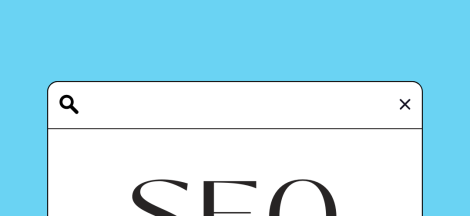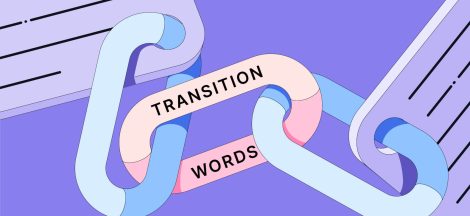It is impossible to have a website without encountering technical difficulties, as numerous issues arise from time to time, jeopardizing the website’s technical health. There is nothing so annoying as such a new technical issue. One of those kinds of issues is redirected chains which existence may ruin your website performance. Solving the redirect chain is rather easy, however, that slight issue may affect your website if you ignore it. This guide will help you learn what types of redirect chains may occur. You will get familiar with their impact on website SEO performance, considering reliable ways to detect redirect chains.
What is the Redirect Chain?
When you forward one URL to another one, i.e. make a redirect, that’s normal, as there are various reasons for redirecting the pages. A redirect chain occurs because of the multiple redirects in the URLs.
There are two types of redirects from this point of view: 301 and 302
301 redirect is a permanent redirect. It means that you redirect a link permanently and will never come back to the previous one.
302 redirect is the temporary type and you let the search engine and reader know that the redirected URL will be recovered or updated some period ago.
The purpose of the redirection is to transfer the link equity to the other URL.
For example,
We made A URL 301 redirect to B-one. Thanks to the redirect, the link equity of URL A transfers to B. So A URL will keep its rankings or organic traffic. What about backlinks of A URL? From this point of view, they are linking to URL A which was redirected to URL B. Here is the redirect chain that occurs.
The redirect chain can occur not only within the internal links of the website but also because of the external link redirections.
There are two common reasons for doing a redirection: when you need to update the page content or it lost its value you need to delete it. The other reason for that is the URL modification, to make that URL more specific.
Types of Redirect Chains
There is no one type of redirect chain, so that other types can be distinguished too. Even though they may differ in their type, they can function and impact somehow in the same way. It is really important to know what kind of chains may occur to detect and fix them immediately.
Redirect Loop
A redirect loop occurs when two pages are redirected to each other. It is regarded as the closest redirect chain. If URL A is redirected to URL B and at the same time URL B has the redirect to URL, the process is called the redirect loop. The browsers will stop the redirection process, and the user will face no content.
HTTP/HTTPS Redirect Chains
This is a site-level type redirect and can occur when the website is being redirected from HTTP to HTTPS protocol or taking the non (www) page and redirecting to the (www) page. If there are some third-party websites that link to those redirected pages, they will cause the chain to happen.
Backslash Redirect Chain
The same situation happens here when the page is redirected without having the slash at the end of the URL. The third-party page, which links to the redirect page (with a slash), will now link to the page that doesn’t have that slash. As a result, the page will suffer from it.
Canonical Redirect Chain
The canonical redirect is the situation when one page is canonicalized to another one, which is redirected to the third-party page. The role of the canonical is to indicate the preferable page as a reliable source, but if that indicated page has the redirect, the canonical tag loses its role.
Broken Redirect
Broken redirect doesn’t resemble chains, as they can bring more serious problems. The broken redirects generate errors (404), and can sometimes lead the user to the wrong page. This is rather a worrying type of issue, as it can not be detected easily. To avoid broken redirects, one should not make unnecessary changes to URLs and monitor redirects attentively.
How do Redirect Chains Impact SEO?
As a technical issue, the redirect chain will bring nothing but harm to website SEO performance. Even though the website has one or two redirect chains, serious problems can not be produced, yet the number of redirect chains will make the website suffer from it, destroying its performance. From this point of view, the harmful influence can be seen in several parts.
Loss of Link Equity
The number of high-quality backlinks guarantees to have stable rankings. That is built on the equity (link juice) that the backlink or internal link transfers. As a direct, and normally working link transfers 100% equity, during the redirect chain the equity percentage reduces because of the middleman chains. Overall the results can not be satisfying.
Page Performance Problems
The redirect chains will impact page speed and your user will have to wait until the destinated page opens. But the user is not patient. Sooner or not he will leave the website. That will also impact page rankings. For short, more redirect chains are the result of slower page speed, an increase in bounce rate, and a significant drop in rankings.
Crawling Budget Problems
Redirect chains waste the GoogleBot crawling budget. The bot crawls pages due to links and the chains have become the main obstacles GoogleBot faces. To get the destination page it will have to crawl all the chains. If there are more chains, it will take longer to reach. Consequently, the bot will not crawl anymore.
How to Detect Redirect Chains?
Knowing the different types of redirect chains and how they affect website SEO can make discovering and repairing them easier. Even though the website has redirect chains or not, technical health monitoring should be part of the website maintenance. It will not be wise to sit and go page by page or link by link and find out whether there is a chain or not. There are several components to pay attention to detect a redirect chain before using any tool.
Page Speed
As page speed is one of the key factors for the website to perform a good performance, the long-lasting page load will grab your attention, informing you about the existence of some issues. When the page is redirected, the loading process becomes a little bit longer than before. If there is a redirect chain, the page will face a problem with the page speed. Page speed can be a hint to detect the redirect chain.
Check the Links
The other simple component is just checking the URLs. This action can be useful while checking the external links by clicking on the anchor texts. Any significant changes can be noticed on the page. If there is no significant change, the URL should be checked to find out whether any specific thing is added or removed from the URL. However, the process will take much time for you.
Google Search Console
Thanks to this free tool, the issues can be easily detected and fixed on time. Just monitor the website performance to find the issue. In the “Coverage” section, the GSC will inform you about the pages with redirects. This hint should capture your attention to analyze those pages for more detailed information.
Technical Audit
The best and most trustworthy way to detect redirect chains lies in running a technical audit. That basically is conducted by the ScreamingFrog tool, as it is really simple and the results are more reliable. The tool performs a deep audit and brings to the surface all technical issues. The redirect chains can be simply caught while just running the audit. As an alternative to this tool, you can run your website in any other SEO tool and make an audit. The results are no less reliable than. In addition, the Redirect Path extension is useful to have in this case, too.
Sum Up
Overall the redirect chains are part of the technical problems and one should always monitor the website to detect and fix those kinds of issues. Most of the time redirect chains occur without any intention, as many people, who run their blogs on their own, have no idea about this kind of problem. That’s why differentiating the redirect chain types, understanding their risky existence and impact, and conducting the appropriate solution are very important to know to not ruin the website performance.
Suggested:
Redirecting links – Are Good or Bad for SEO?
Canonicalization: You must solve this canonical issue to avoid Duplicate content.





 Work From Home: Tips To Make Money In 2024
Work From Home: Tips To Make Money In 2024